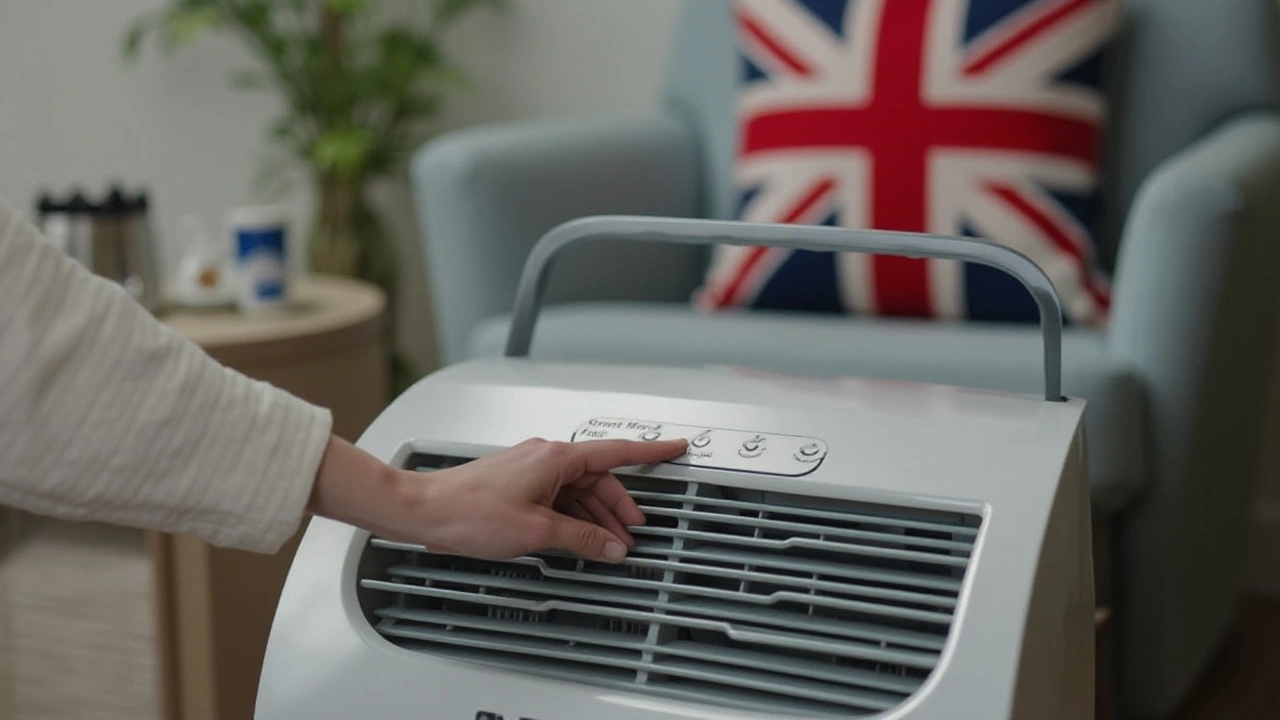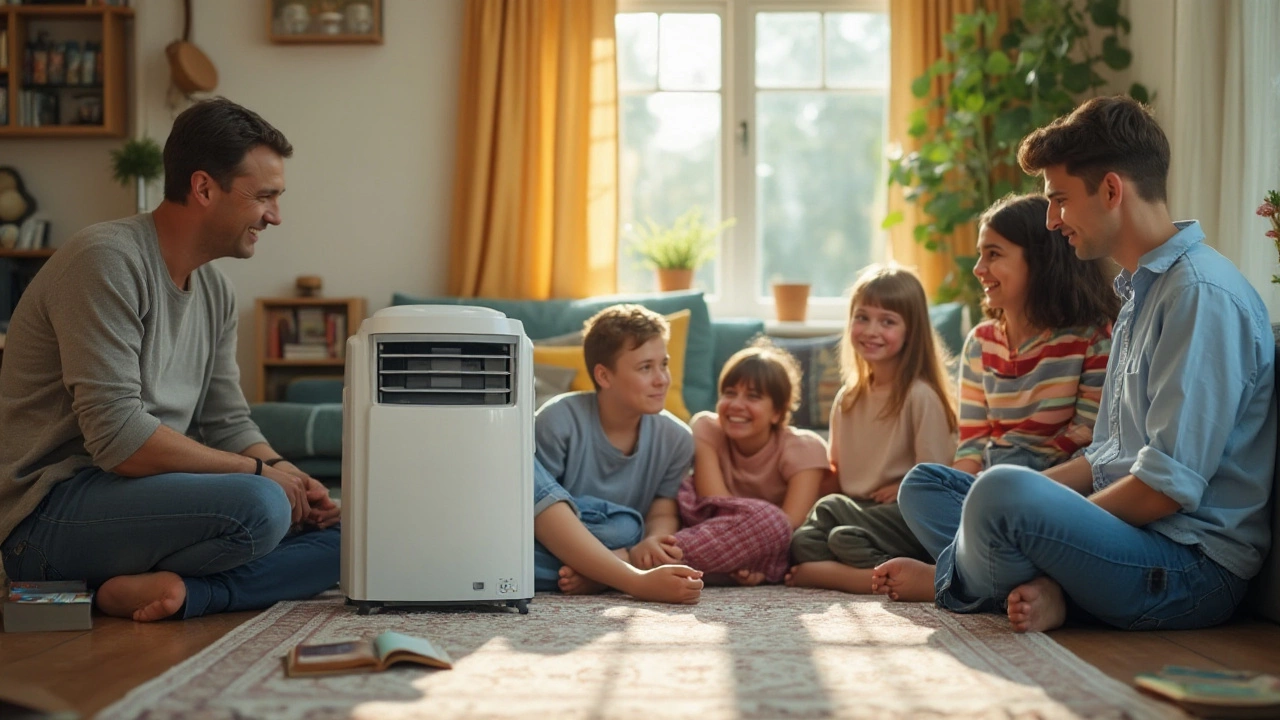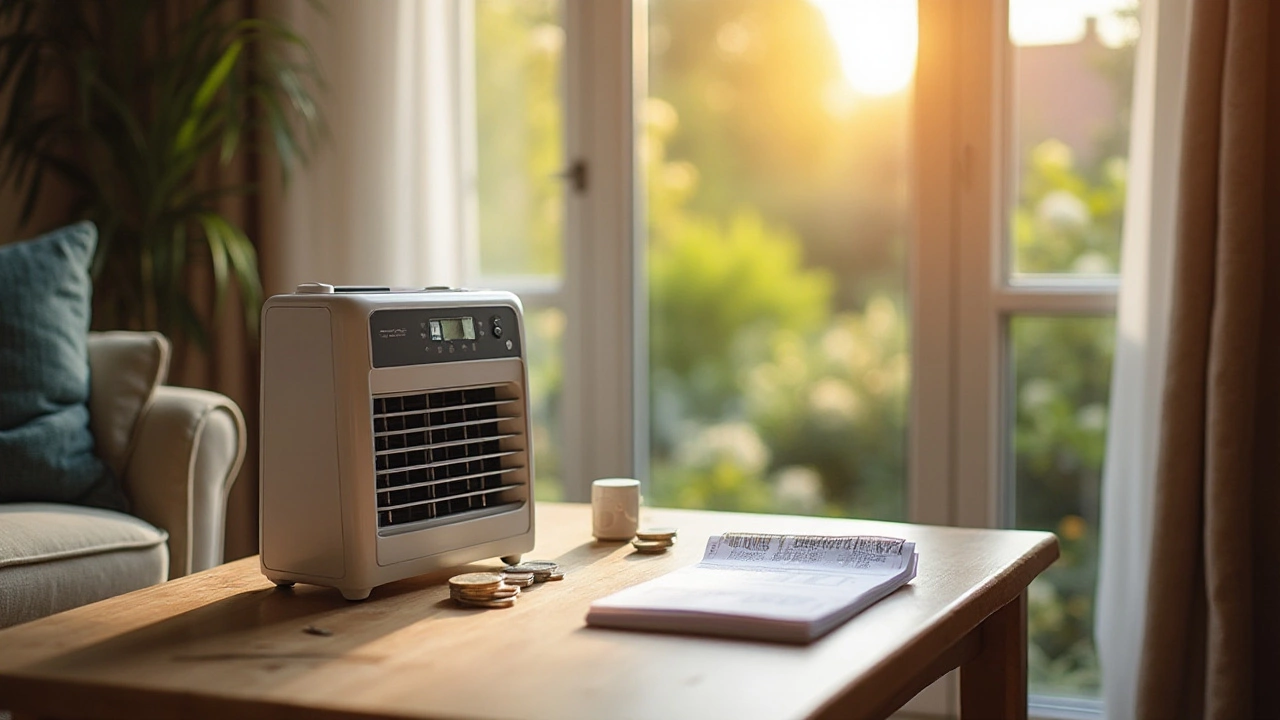Ah, the scorching summer heat! It often leaves us feeling drained and makes the cool breeze of an air conditioner an absolute delight. But as we relish in the comfort of a portable AC, a lingering question creeps in—how much does it really cost to run this cooling marvel for an hour?
In order to answer this, there are certain key factors to take into account. These include the unit's power rating, the cost of electricity in your area, and even the efficiency settings you use. Get acquainted with how these elements influence your energy consumption.
No one wants to be startled by hefty electricity bills, and fortunately, with a few calculations and smart choices, you can savor the chill without losing your cool over costs. By demystifying the numbers, we can provide some clarity on managing your portable AC expenses wisely.
- Factors Affecting the Cost
- How to Calculate Energy Usage
- Estimating the Cost per Hour
- Tips to Save on Energy Bills
- Maximizing Portable AC Efficiency
Factors Affecting the Cost
Running a portable air conditioner efficiently depends on more than just flipping a switch. A variety of factors intertwine to dictate how much it costs to keep your cool kingdom at just the right temperature. Let's delve into the primary elements that affect energy expenses when running a portable AC for an hour. First and foremost, consider the unit's power rating, measured in watts. Many modern units range between 800 and 1,500 watts. The difference in wattage can significantly impact what you pay, with higher wattage units packing a more expensive punch. So, understanding what your unit consumes is a key piece of the puzzle when deciphering energy use.
Next, the electricity rate in your area plays a significant role. Around the globe, these rates can fluctuate considerably. For instance, the U.S. Energy Information Administration reported that in 2023, residential electricity averages approximately 15 cents per kilowatt-hour. A bump or dip in this rate can alter your cost tremendously. To navigate these waters, keeping abreast of local energy prices can be a wise plan. As such, researching your regional electricity cost can distinguish between an average bill and a shocking surprise when the month closes.
It's essential not to overlook the SEER rating, which stands for Seasonal Energy Efficiency Ratio. This rating is a solid indicator of the efficiency of different portable AC units. The more efficient your unit is, the less you'll be spending to cool the air in your personal oasis. Generally, a higher SEER rating indicates a more efficient unit. Many save more money in the long run by choosing a unit with an excellent SEER rating, even if the initial purchase price is higher. Aiming for energy-efficient models from reliable manufacturers can see a drastic reduction in how much you shell out by saving on every kilowatt-hour consumed. As the Environmental Protection Agency puts it, "High energy efficiency means lower operating costs," ensuring comfort without compromising the wallet.
Room size is yet another moving part in the equation of operational costs for your portable air conditioner. The relationship is straightforward: the larger the area needing cooling, the longer the unit must run, and the more energy it consumes. Consider calculating BTUs, or British Thermal Units, necessary for your space. Think of BTUs as the measure of cooling power your room needs. A mismatch can lead to a unit overworking and consuming extra energy or one that never gets the job done, leaving you sizzling in the summer heat. For example, a standard room of 20 by 20 feet generally requires about 10,000 BTUs to cool efficiently.
In the grand scheme, combining the understanding of these factors with conscious usage habits, like turning off units when not needed, can tailor your experience and help harness costs. In this way, you can keep that inviting chill in the air precisely where it belongs: in your home, not on your bill. And with this knowledge in your back pocket, nothing can keep you from breezing through both the heat and your energy consumption with confidence.
How to Calculate Energy Usage
Understanding the energy usage of your portable air conditioner is key to managing your utility expenses. The first step involves identifying the unit's power rating, typically measured in watts, which is provided by the manufacturer. This information can be found on a label attached to the unit or in the product manual. Most portable ACs have a power rating between 1000 and 1500 watts. To calculate the energy consumed in an hour, you simply use this power rating.
To calculate energy usage, multiply the power rating in watts by the number of hours of operation. Since we are focusing on one hour of usage, the calculation remains straightforward. For example, a 1200-watt unit running for one hour will consume 1200 watt-hours, which is equivalent to 1.2 kilowatt-hours (kWh), as there are 1000 watts in a kilowatt. Now, to understand the cost of running your unit, you need to know the kWh rate charged by your local utility provider. This rate can vary greatly depending on the location and the season.
"Energy rates are often higher during peak summer months, as demand for electricity increases," says John Doe, an expert in energy efficiency at the National Energy Conservation Center.With the kWh rate in hand, you can proceed to calculate the cost. Multiply the energy consumption (in kWh) by the local kWh rate. For simplicity, assume a kWh rate of $0.15; the cost of running a 1200-watt portable AC for an hour would be 1.2 kWh × $0.15 = $0.18. This simple yet effective method helps you get a clear picture of your energy expenses.
If you're not a fan of manual calculations, modern technology offers a handy solution. Smart energy monitors can be connected to home appliances, providing real-time data on energy consumption, often including cost estimates based on local rates. Taking advantage of such tools can ease the way you manage energy usage, especially when using multiple appliances simultaneously.
For those seeking to make the most of their cooling experience, comprehend the concept of Energy Efficiency Ratio (EER). Portable ACs with higher EER values are more efficient, consuming less energy while delivering the same cooling output. EER is calculated by dividing the BTU (British Thermal Unit) rating by the power consumption in watts. Comparing EER ratings is advisable when purchasing a new unit, as it influences long-term cost savings.

Estimating the Cost per Hour
To understand how much it costs to run a portable air conditioner for an hour, we must first break down the essentials. At the heart of this calculation is the power consumption of the unit, usually represented in watts. Most portable ACs range from 800 to 1,700 watts, depending on their size and cooling capacity. Let's consider a mid-range unit with 1,200 watts. With this figure in hand, we can move onto understanding how your local electricity rates come into play. Rates are measured in kilowatt-hours (kWh), typically falling between 10 cents to 30 cents, depending on where you live and the time of year. To arrive at a cost, convert the watts into kilowatts by dividing by 1,000.
For our 1,200-watt example: 1,200 watts / 1,000 = 1.2 kW. Next, multiply 1.2 kW by your local rate to find the cost per hour of operation. Suppose your utility charges 15 cents per kWh; the math would look like this: 1.2 kW x $0.15 = $0.18. This means, running this portable AC will cost you approximately 18 cents every hour. Of course, real-world costs can vary. The efficiency settings and maintenance of your unit can impact this estimate. Remember that running the unit on a higher setting or neglecting maintenance can lead to increased power usage over time.
Accurate calculations depend on regular monitoring and understanding actual energy usage. That's where energy meters come in handy. These devices provide real-time data on the consumption of your portable AC cost, allowing you to keep tabs on every cent. For someone like Bill Johnson, an energy analyst who tested various models, "Understanding energy usage isn't just about dollars, it's about getting the most from your appliances."
"Understanding energy usage isn't just about dollars, it's about getting the most from your appliances." — Bill Johnson, Energy Analyst
A little knowledge goes a long way. When we evaluate the costs, it's worth comparing different models, looking out for energy-efficient units that might have a higher price tag but offer long-term savings in the form of reduced energy consumption. Keep in mind that even slight changes in operation, like adjusting the thermostat upwards when not needed, can add up significantly across a month. Awareness is your best tool, allowing you to balance comfort with cost-efficiency.
Tips to Save on Energy Bills
When the heat becomes unbearable, your portable air conditioner stands as a reliable ally. However, keeping those energy expenses under control is essential. One of the first things to consider is the location of your portable AC unit. Ensure it’s positioned away from direct sunlight and heat sources. This seemingly small adjustment can significantly reduce energy consumption, as direct heat forces the unit to work harder and longer, amplifying those electricity costs.
Next, let’s discuss the filter. Regularly checking and cleaning the portable AC’s filter is crucial for optimal performance. A clogged filter can obstruct airflow, making the AC use more power to cool the room effectively. Make it a habit to clean or replace the filters according to your unit’s manual; you might find the sweet spot of air efficiency and cost savings in one go.
Another insightful approach is utilizing the AC’s programmable settings, if available. Many modern portable units allow you to set timers and sleep modes. These features can significantly cut down on the energy consumption, as they automatically adjust the cooling intensity based on the time of day. Meaning, instead of manually tuning it down during nighttime, you smartly automate the task. As Will McKnight from the Energy Efficiency Journal states,
“Smart schedules and programmable settings aren’t just fancy upgrades; they can cut your energy bills by up to 15% annually.”
Don’t forget about insulation too. Ensuring that your room is well-insulated can make a world of difference. Use curtains or blinds to block out excess heat, especially during peak sun hours. Sealing any air leaks around doors and windows with weather stripping or caulk can keep the cool air in and the hot air out, allowing your unit to function efficiently. Undoubtedly, insulation stands as an unsung hero in the battle against high electricity costs related to cooling.
In terms of timing, running your portable AC during off-peak hours can also shave costs off your bill. Many utility companies have lower rates during off-peak times, usually at night or early morning. So, cooling your space during these hours, when possible, can be beneficial. A simple shift in schedule might yield surprisingly positive results in your next bill. Especially, if your portable AC comes with a delayed start function, you could set it to cool the room just before use, maximizing comfort and savings.
Lastly, make sure to regularly maintain the unit. A well-maintained portable AC consumes less energy and lasts longer. Take time to check for any blockages or issues, ensuring that all parts are functioning correctly. If you notice any dramatic drops in efficiency, consult a professional for a detailed inspection. Remember, small steps in maintenance can lead to considerable savings.

Maximizing Portable AC Efficiency
Making the most of your portable AC requires more than just plugging it in and letting it run. To truly maximize its efficiency, it's crucial to understand how you can tweak your environment to support the unit's operation. Start by choosing the right spot for your air conditioner. Ideally, place your unit near a window so that the hose can easily expel hot air outside. Ensuring the hose is short and straight avoids unnecessary kinks and bends which can reduce its performance.
Reflecting on the room’s insulation can also have a noticeable impact. The less energy required to cool the air, the more efficient your air conditioner will be. Consider using blackout curtains or shades to prevent sunlight from heating the room during the day. Moreover, sealing any drafts or gaps around windows and doors will prevent cool air from escaping, allowing your unit to work less strenuously. Remember, an AC’s performance is partly dependent on the integrity of the space it cools.
Easy Maintenance for Optimum Performance
Routine maintenance is key to ensuring your portable air conditioner functions at peak efficiency. Regularly cleaning the filters is a simple yet effective task. Dust and debris buildup can significantly lower efficiency and decrease the lifespan of your unit. It's recommended to clean the filters every couple of weeks, or more frequently if your home is prone to dust. Another aspect of maintenance includes checking the condenser coils for dirt accumulation and giving them a gentle wipe if needed. According to some experts, maximizing air conditioner efficiency can lead to a reduction in energy bills by up to 15%—a fact that can't be ignored!
"The secret to maximizing your air conditioner's efficiency lies not just in professional maintenance but also in the daily upkeep you can manage at home." — The Efficient Home Journal
Humidity levels play an important role in the efficiency of your portable AC. Ideally, keeping indoor humidity below 50% can increase comfort and lessen the workload on your unit. Consider using a standalone dehumidifier if the humidity is too high. Not only will your air conditioner run less frequently, but your living environment will be more comfortable as well.
Innovative Cooling Techniques
Lastly, consider adopting innovative techniques to reduce heat indoors. Utilizing ceiling or portable fans in conjunction with your AC can circulate the cool air more efficiently. This blend encourages even room temperature distribution, reducing dependency solely on the AC unit. Additionally, limit heat-generating activities like cooking during peak sunshine hours. If unavoidable, try using a microwave or small appliances which produce less heat.
By implementing these strategies, not only will you enhance the efficiency of your portable air conditioner but you'll also likely notice a dip in your energy bills. The magic lies in making these small yet impactful changes—an art of optimizing comfort while being cost-effective.

